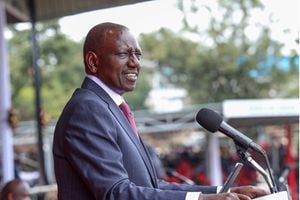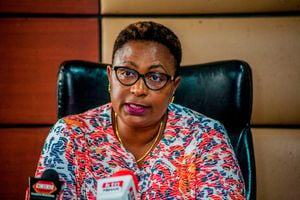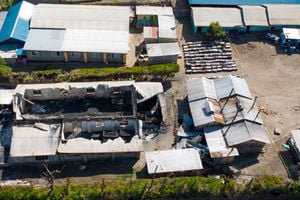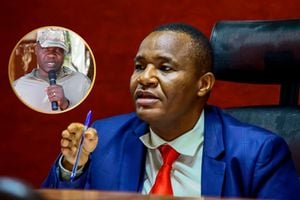How erratic rains are causing confusion among farmers

What you need to know:
- Most farmers in Kenya plant crops in March and April during the long rains before others plant for a second time in a year in October during the short rains.
- Today, however, it is still being determined whether it will rain or not and some people have ended up planting early or late, incurring losses when seeds fail to germinate.
Before climate change became a major issue affecting food production, most farmers in low-income countries would be sure of when to plant and get a bumper harvest.
Most farmers in Kenya plant crops in March and April during the long rains before others plant for a second time in a year in October during the short rains. Today, however, it is still being determined whether it will rain or not and some people have ended up planting early or late, incurring losses when seeds fail to germinate.
It has become difficult to predict rainfall patterns just by using traditional methods that most people depended on years ago. Such predictions were made by watching natural phenomena like the migration of birds.
Farmers who fully depend on rain-fed agriculture must today rely on technology to overcome the effects of climate change and be able to know when to plant and engage in other farm practices. What is available, including information about weather partners that is provided by the Kenya Meteorological Department, is however not precise on a particular area; thereby causing confusion to some farmers.
Met department mostly gives information about weather partners of a particular county. Most farmers find this difficult because counties cover large areas with different weather systems. Farmers in Homa Bay are, however, an advantaged lot because they can now access information about the weather in their exact location.
This is done through a system developed by Tomorrow Now, a tech organisation that offers weather information to communities. It partnered with Homa Bay County government in establishing a climate information centre that collects and analyses climate data including temperature, rainfall, wind, soil moisture, lake conditions and extreme weather indicators.
The information is then disseminated to farmers, fishermen and the public, aiding in decision-making for farming and informing county policymakers. Governor Gladys Wanga says the center also serves as a call center for disaster risk management.
"Besides agriculture, the centre can be used in case of an emergency because most disasters happen as a result of climate change. Residents can call in case of any disaster before call operators advice on the best action to take," she says.
Climate scientist Clifford Omondi notes that climate change has disrupted food availability, reduced access to food and affected food quality. He says projected increases in temperatures, changes in precipitation patterns, changes in extreme weather events and reductions in water availability are the main forces driving low agricultural productivity.
The climatologist says the climate information centre will address some of the challenges faced by different sectors. "Climate information centre is simply an environmental monitoring architecture using artificial intelligence to help all departments across the county. The properly packaged data helps policy makers in development agenda," Mr Omondi says.
The centre also serves as a hub for innovative solutions and offers guidelines for mitigating the effects of climate change.
It has operators whose role is to receive calls from farmers before advising them on weather partners and other best agricultural practices. The operator can also send text messages to farmers and fishermen across the county based on their geo-location.





